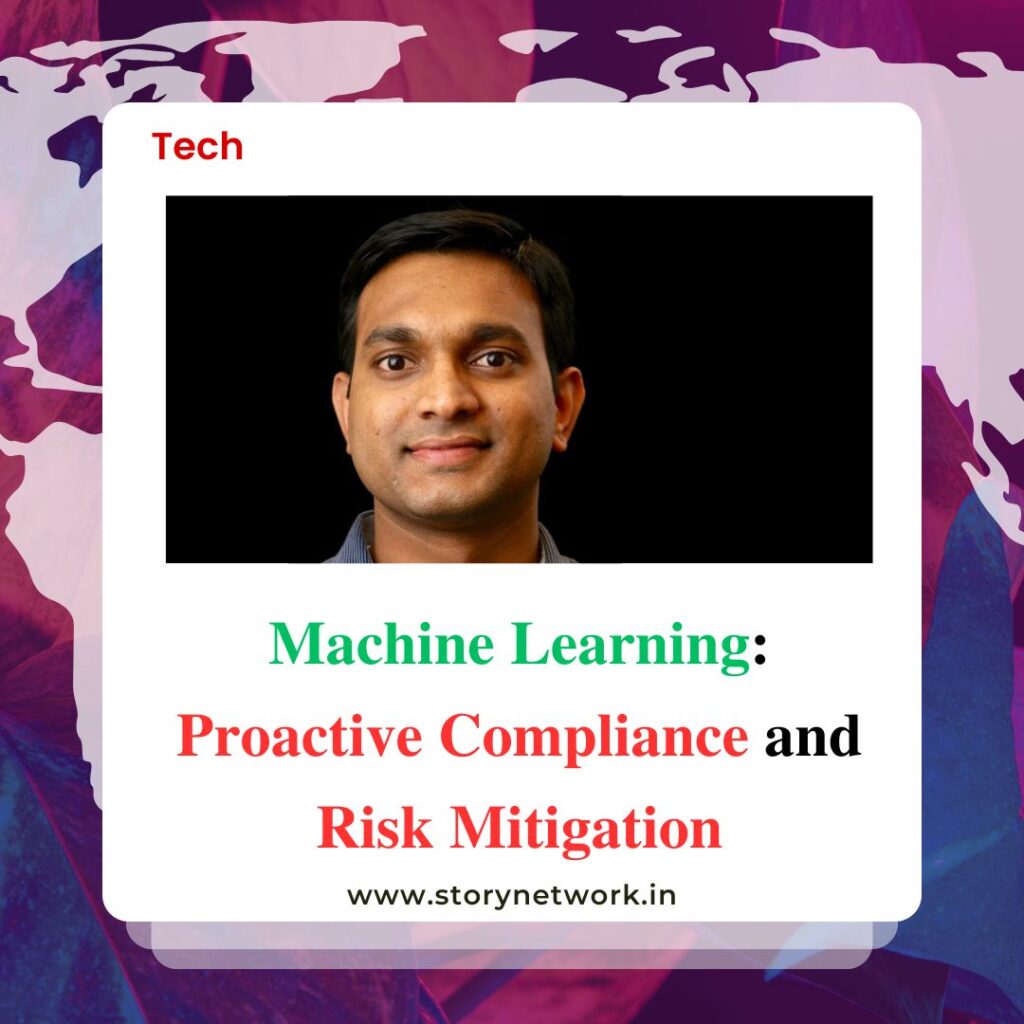In today’s intricate regulatory landscape, organizations encounter growing challenges in maintaining compliance and addressing risks. Traditional compliance strategies often adopt a reactive stance, addressing issues only after they arise. Keshava Reddy Depa, an innovator in artificial intelligence (AI) and machine learning (ML), is redefining these frameworks, leveraging ML to foster proactive compliance and risk mitigation strategies.
The Challenge of Modern Compliance
Compliance demands are ever-changing, with organizations required to manage intricate regulations, analyze vast datasets, and navigate cross-border complexities. These challenges are amplified by:
- Data Overload: Global data generation is expected to reach 180 zettabytes by 2025, making manual oversight increasingly impractical.
- Complex Regulations: The cost of regulatory compliance is significant, with financial institutions spending an estimated $270 billion annually on compliance processes.
- High Stakes: Non-compliance can have severe repercussions. For example, the European Union’s General Data Protection Regulation (GDPR) has led to fines exceeding $4 billion since its implementation in 2018.
The Role of Machine Learning
Machine learning serves as a transformative solution for modern compliance challenges, offering robust tools to analyze patterns, detect anomalies, and predict potential risks. Depa has championed ML’s potential to not only streamline compliance processes but also shift them toward proactive risk management.
Key Applications of ML in Compliance and Risk Mitigation
- Real-Time Monitoring and Alerts:
- ML systems monitor transactions, communications, and activities continuously, flagging potential violations or risks as they occur. For instance, global losses due to fraud are estimated at $5.38 trillion annually, highlighting the critical need for advanced fraud detection mechanisms.
- Regulatory Change Management:
- ML tools analyze regulatory updates and assess their implications on an organization’s policies, ensuring swift adaptations to new requirements.
- Predictive Analytics for Risk Assessment:
- By leveraging historical data, ML models predict potential non-compliance areas, enabling organizations to address vulnerabilities before they escalate. For example, predictive analytics can reduce compliance-related incidents by up to 30%.
- Automation of Compliance Tasks:
- Routine tasks such as data validation, reporting, and document verification are automated, reducing errors and increasing operational efficiency. Automation can lower compliance costs by as much as 40%.
Advantages of ML-Driven Compliance Strategies
Depa emphasizes the multifaceted benefits of ML-driven compliance approaches:
- Efficiency: Automating compliance workflows reduces operational burdens and accelerates responses.
- Accuracy: ML minimizes manual errors, ensuring greater precision in compliance efforts. Studies indicate that automated systems improve compliance accuracy by over 85%.
- Scalability: These systems effectively manage large datasets and complex workflows, making them suitable for global organizations.
- Cost Savings: Proactive mitigation reduces fines, legal expenses, and reputational damage, with organizations potentially saving 20–30% in operational costs by leveraging ML.
Use Cases Across Industries
Machine learning-driven compliance solutions are reshaping operations in various sectors:
- Financial Services: Fraud detection and anti-money laundering (AML) monitoring, critical in an industry where global fraud detection spending exceeds $5 billion annually.
- Healthcare: Predictive analytics enhance HIPAA compliance and safeguard patient data, with data breaches costing the sector an average of $10.93 million per incident.
- Retail: ML systems ensure compliance with consumer protection laws and monitor supply chain risks. For instance, supply chain disruptions cost global businesses over $1 trillion annually.
- Manufacturing: Safety standards and environmental compliance are enhanced, reducing operational risks. Non-compliance in manufacturing can lead to fines of up to $14,502 per serious violation, per OSHA standards.
Overcoming Implementation Challenges
Despite the advantages, ML implementation for compliance comes with challenges:
- Data Quality: Effective ML systems require accurate, clean, and comprehensive datasets.
- Integration Complexity: Seamlessly integrating ML tools with existing systems demands careful planning.
- Regulatory Oversight: Ethical and regulatory considerations must guide the use of AI-driven solutions.
Depa advises a phased adoption strategy, beginning with pilot projects to validate ML systems’ efficacy before scaling organization-wide.
The Future of ML in Compliance
As ML technologies continue to evolve, they are expected to become even more integral to compliance and risk management strategies. Depa envisions advancements in natural language processing (NLP) for analyzing legal texts, explainable AI for transparent decision-making, and federated learning for secure, collaborative data analysis.
In the words of Keshava Reddy Depa, “Machine learning is not just a tool for managing compliance—it’s a strategic advantage in mitigating risks and building resilient organizations.” By adopting ML-driven solutions, businesses can move from a reactive stance to a proactive approach, safeguarding their operations while staying ahead of regulatory demands.
For organizations navigating the complexities of today’s regulatory landscape, ML represents a transformative opportunity to enhance efficiency, accuracy, and resilience in compliance and risk management.

